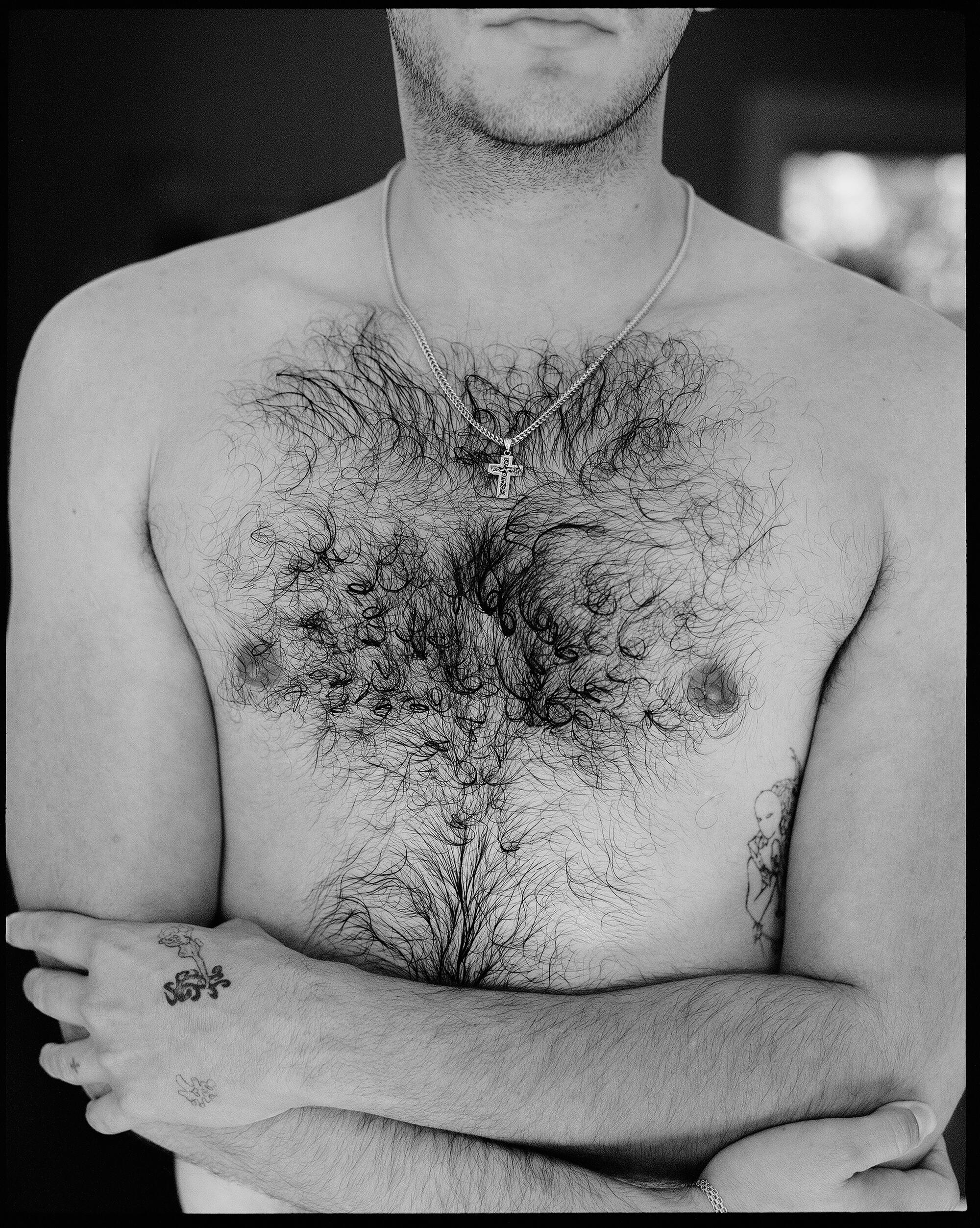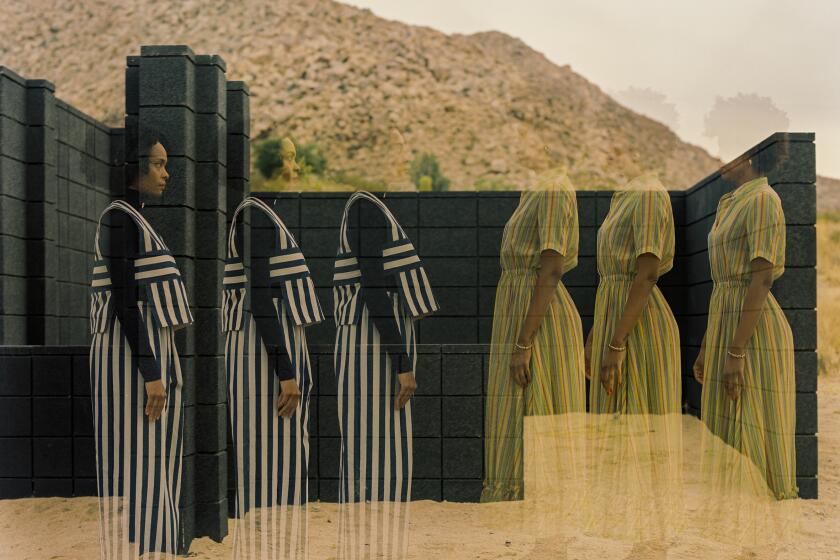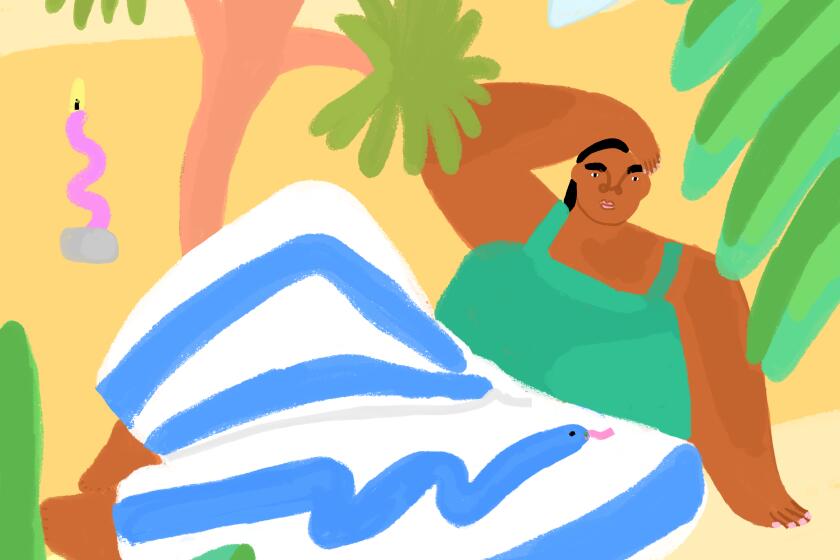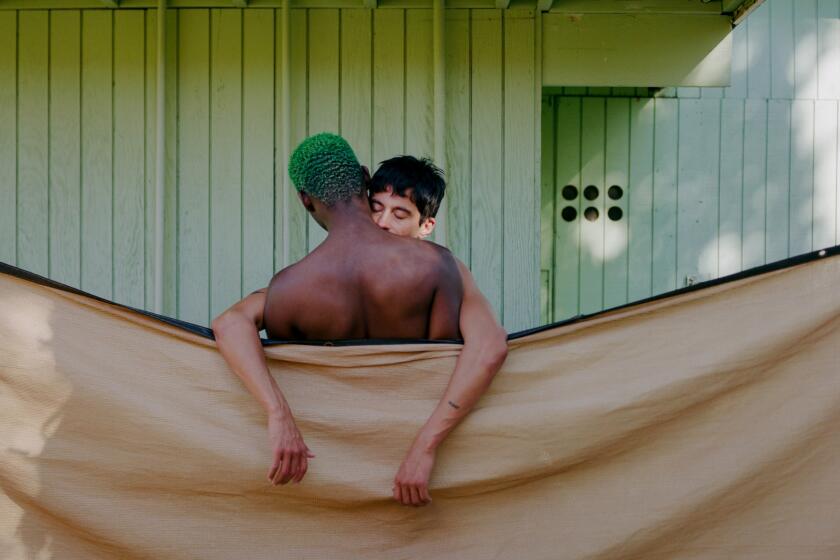- Share via

This story is part of Image issue 8, “Deserted,” a supercharged experience of becoming and spiritual renewal. Enjoy the trip! (Wink, wink.) See the full package here.
The desert is a space of radical acceptance. It welcomes our dreams in its untouched expanses. We go to the desert to reconnect with nature, to breathe something resembling clean air — and also maybe to do a few things we wouldn’t dream of doing back in the city.
For decades, Angelenos have been seeking out the dusty majesty of Joshua Tree, Palm Springs and Death Valley to get away from the labyrinthine maze of parking violations, social faux pas and the constant bombardment of images of perfect bodies doing perfect things, mostly thanks to the wonders of Photoshop. The desert represents our escape from all that. The desert says, “Come, unbutton your shirt. Live a little.”
In one sense, exposed chest hair — perhaps the accessory of choice in the desert — is just a method of survival. An open shirt is sort of mandatory in a place where the temperature regularly hits the 100s. But proudly displaying chest hair isn’t simply a practical concern in the barren lands outside of town. The desert is so important to us because it’s where our rules can be bent ever so slightly. This is the land of clothing-optional hotels, after all (also a staple of desert culture tailor-made for staying cool). The tacky can be elevated to something just shy of the holy.
The bright colors, midcentury architectural excesses and wry sense of humor of places like Palm Springs demand radical physical candor. I’ll happily show my chest hair in certain situations in the city, but in Palm Springs, it’s like my duty. The glorious, ever-present dry heat of Palm Springs is a natural incubator for opening up our buttons. We’ve been doing it for decades.
Inside issue 8: ‘Deserted’
Kenturah Davis and Alice Smith have a supercharged self-care retreat.
Sophia Nahli Allison shows you what’s possible when you allow yourself to be led by spirit.
Justin Torres remembers those visits to the clothing-optional hotels in Palm Springs.
Julissa James explores why so many people head to Joshua Tree to do shrooms.
There’s an entire subgenre of celebrity photography that’s just Frank Sinatra golfing with his shirt open in Palm Springs. The famous Slim Aarons Palm Springs pool party photos of a group of upper-class white tourists having a cocktail soiree might feature multiple men in ascots, but you know that in a few hours, those extraneous pieces of fabric are going in the trash and their chests will be free. Jonah Hill is probably the ambassador of Los Angeles’ moony surf-and-sand spirit, and his chest is on display all over his GQ Style cover shoot.
This was a phenomenon of the liberated ’70s, to be sure. Fashions became more unconventional and, by proxy, more sexualized. Chest hair became a symbol of virility, maturity and confidence. Burt Reynolds, the preeminent cinematic icon of that decade, made chest hair a required accessory for men all around the world.
By the time I was old enough to have chest hair, the fad had died off. Exposed chest hair had become the domain of the gross old man. The question of whether to shave the stuff off or go through the tedious and painful work of waxing vexed many and became a joke unto itself. For a generation of men, the waxing scene in “The 40 Year Old Virgin” induces soaked-sheet nightmares. I can still hear the dull-eyed screams of Steve Carell when I close my eyes. That scene said that chest hair was an impediment to romantic satisfaction but also was a pain in the ass to get rid of.
I shaved once, back in college. Then I scratched my upper body like I’d been rolling around in a coffin full of fleas. From there, I learned to just accept that my chest would never conform to the fashions of the time. Having a body is a burden. But recently, the pandemic has made me reconsider conventional wisdom. Something about that moment broke a lot of taboos for people in L.A. If you can wear sweatpants to a remote staff meeting, maybe you can bare your chest just a little bit. I rock the open chest whenever I can: nights out, weddings, brunches. Maybe not bar mitzvahs or quinceañeras just yet. But the one place that truly demands chest hair will always be the desert.
Of course, the clean chest is still a prized commodity in Southern California. If it wasn’t, an entire subsector of the cosmetics industry would evaporate. But the scales are tipping back toward the hirsute. Poolside looks in Palm Springs can include a bit more hair than the earlier decades of the 21st century because we’re looking back more than we look forward these days. Nostalgia is more potent in times of social anxiety. Chest hair is something we equate with the past, with bygone days of what it meant to be a sexual, stylish being in the 20th century. Wasn’t it nicer back then, we say to ourselves as the days casually fly by. Los Angeles doesn’t always do right by its own history. One only needs to look at the unpermitted “restoration” of the legendary Pig ’n Whistle in Hollywood to see what happens to our cultural legacy when we’re not paying attention.
Palm Springs is the rare oasis in Southern California that retains its historical shape and rejects any ideas of modernity past 1990. The desert is home to a dream that never fully materialized here, a lifestyle that is beyond most of our means but tantalizing to look at. At its best, the desert is reckless, wild and pure. When men open their shirts just a bit, we get to mainline a bit of that spirit.











